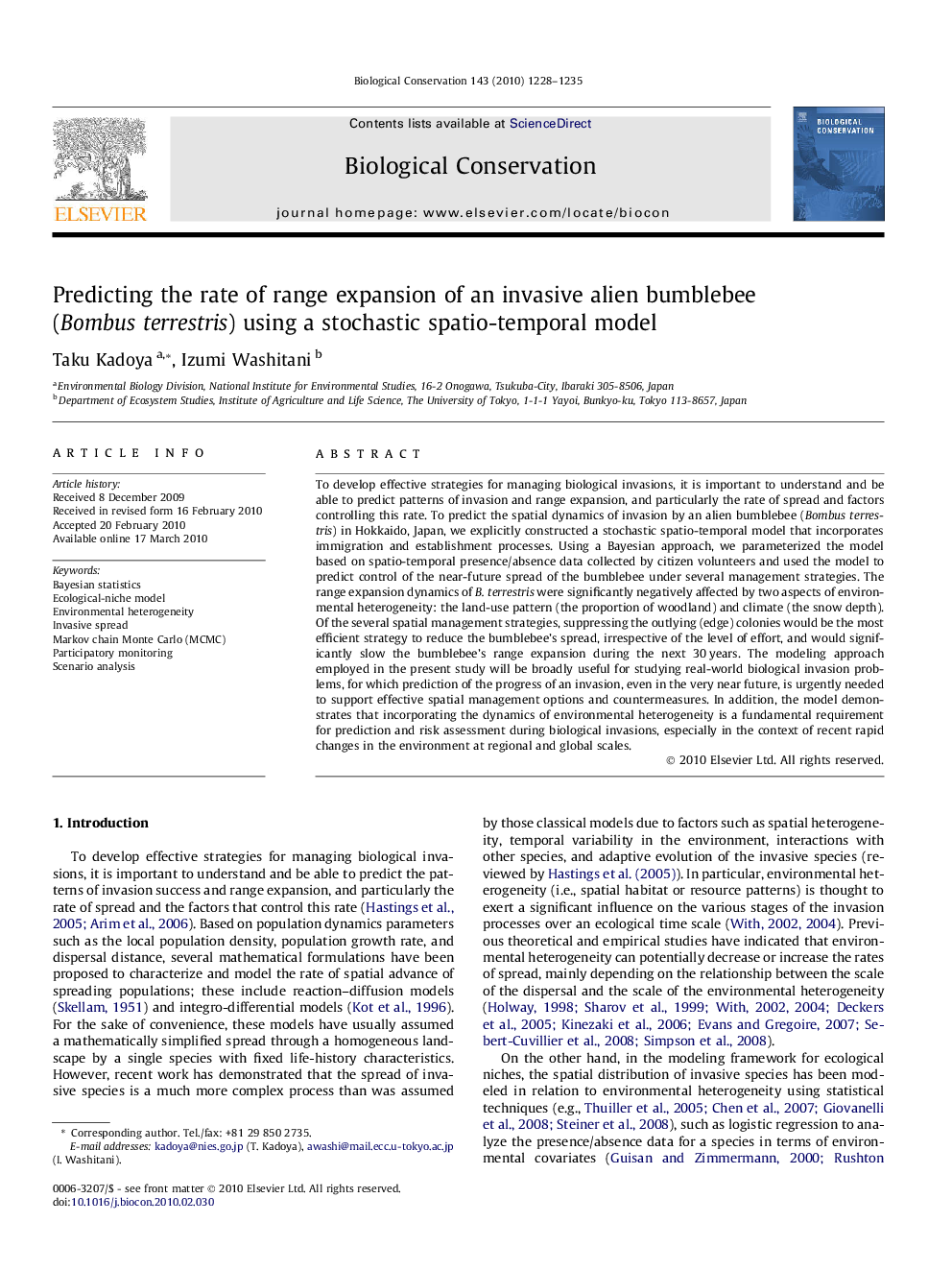| Article ID | Journal | Published Year | Pages | File Type |
|---|---|---|---|---|
| 4386333 | Biological Conservation | 2010 | 8 Pages |
To develop effective strategies for managing biological invasions, it is important to understand and be able to predict patterns of invasion and range expansion, and particularly the rate of spread and factors controlling this rate. To predict the spatial dynamics of invasion by an alien bumblebee (Bombus terrestris) in Hokkaido, Japan, we explicitly constructed a stochastic spatio-temporal model that incorporates immigration and establishment processes. Using a Bayesian approach, we parameterized the model based on spatio-temporal presence/absence data collected by citizen volunteers and used the model to predict control of the near-future spread of the bumblebee under several management strategies. The range expansion dynamics of B. terrestris were significantly negatively affected by two aspects of environmental heterogeneity: the land-use pattern (the proportion of woodland) and climate (the snow depth). Of the several spatial management strategies, suppressing the outlying (edge) colonies would be the most efficient strategy to reduce the bumblebee’s spread, irrespective of the level of effort, and would significantly slow the bumblebee’s range expansion during the next 30 years. The modeling approach employed in the present study will be broadly useful for studying real-world biological invasion problems, for which prediction of the progress of an invasion, even in the very near future, is urgently needed to support effective spatial management options and countermeasures. In addition, the model demonstrates that incorporating the dynamics of environmental heterogeneity is a fundamental requirement for prediction and risk assessment during biological invasions, especially in the context of recent rapid changes in the environment at regional and global scales.
